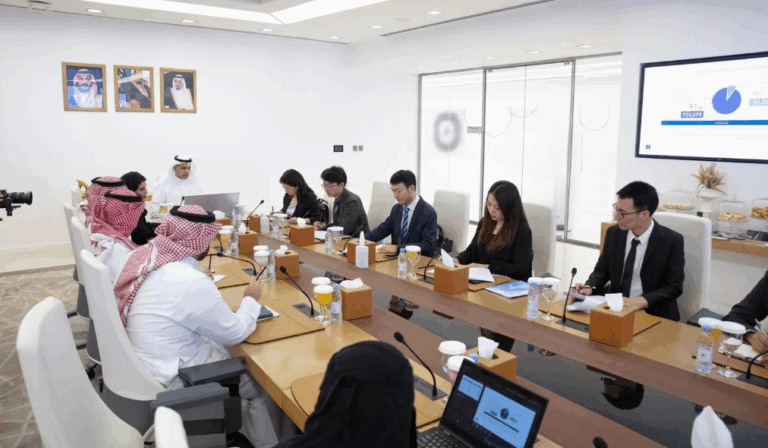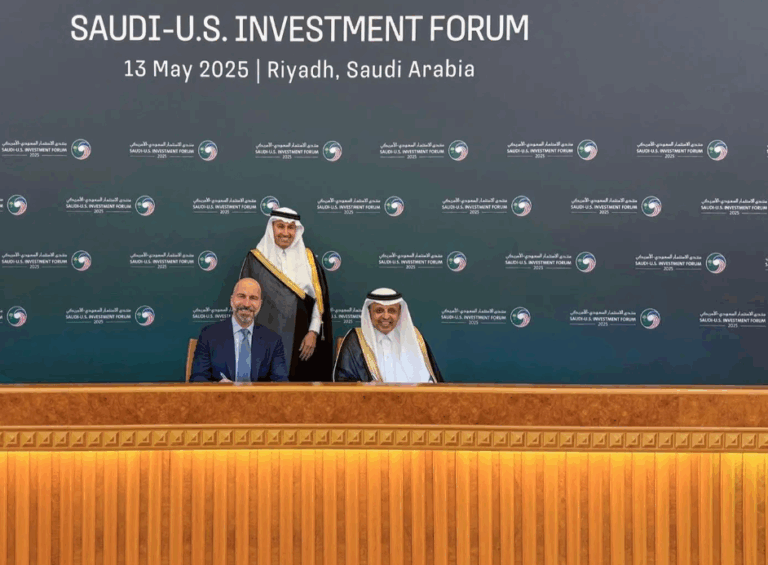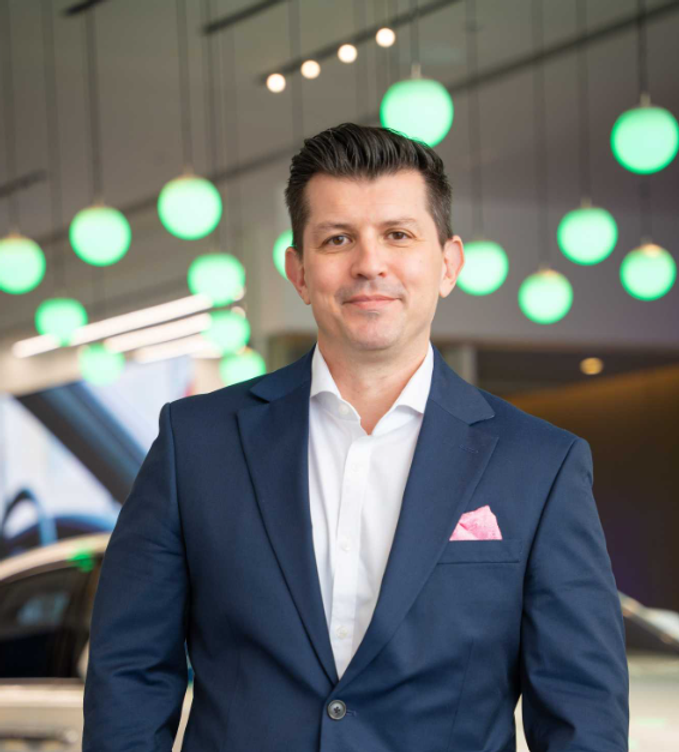**Título:**
“Saudi Arabia Charges Toward Electric Future”
**Intro:**
Saudi Arabia is accelerating its transition to electric vehicles (EVs) under Vision 2030, deploying a three-pronged strategy: government incentives, infrastructure expansion, and policy reforms. From hosting Formula E races to launching its first domestically produced EV, the Kingdom aims to lead sustainable mobility while aligning with global climate goals.
**Factbox (50 words):**
– **Vision 2030:** Drives EV adoption via government support, infrastructure (16+ charging stations), and policy frameworks.
– **First Saudi EV:** Ceer factory to debut locally made electric cars.
– **Milestones:** Hosted Formula E, AI-powered Hajj buses, and global tech partnerships.
– **Goal:** Cut emissions, diversify economy, and pioneer regional eco-mobility.
**Electric Vehicles: Saudi Arabia’s Roadmap to a Sustainable Automotive Future**
The global shift toward electric vehicles (EVs) marks a pivotal step in combating climate change and preserving finite natural resources. As nations worldwide embrace this transition, Saudi Arabia has emerged as a proactive player, aligning its strategies with its Vision 2030 to diversify its economy and lead sustainable innovation. The Kingdom’s approach to adopting EVs is structured into three strategic phases: **Government Assistance**, **Infrastructure Growth**, and **Policy Frameworks**. Here’s how Saudi Arabia is accelerating its electric future.
—
### **1. Government Assistance: Fueling Investment and Innovation**
The Saudi government is laying the groundwork for EV adoption by offering robust support to investors, manufacturers, and consumers. Key initiatives include:
– **Financial Incentives**: Attracting domestic and foreign investors through tax breaks, subsidies, and streamlined regulatory processes to boost EV production and adoption.
– **Global Showcases**: Hosting high-profile events like the **Formula E electric car race**, which highlights Saudi Arabia’s commitment to clean energy and positions it as a hub for green technology.
– **Piloting EV Solutions**: Deploying AI-powered, self-driving electric buses during the Hajj pilgrimage. These initiatives not only reduce carbon emissions but also reshape public perception of futuristic transport.
By prioritizing EV-friendly policies, Saudi Arabia aims to become a regional leader in sustainable mobility while reducing its historical reliance on fossil fuels.
—
### **2. Infrastructure Growth: Building the Backbone for EVs**
A robust charging network is critical for widespread EV adoption. Saudi Arabia is addressing this through:
– **Nationwide Charging Stations**: Installing over **16 charging stations** equipped with standard and rapid charging capabilities, including four strategic locations in Riyadh. Plans include expanding this network along highways to support long-distance travel.
– **The “Auto City” Vision**: Developing the **King Abdullah Economic City (KAEC)** as an EV manufacturing epicenter. The city’s **Ceer plant**—a joint venture with global tech giants—will produce Saudi Arabia’s first domestically manufactured electric car by 2025, aligning with Vision 2030’s industrial diversification goals.
– **Smart Urban Planning**: Integrating EV infrastructure into new urban projects, ensuring cities like NEOM and Riyadh are designed with sustainability at their core.
These efforts aim to eliminate “range anxiety” and create a seamless EV experience for residents and visitors alike.
—
### **3. Policy Frameworks: Educating and Collaborating for Change**
Saudi Arabia recognizes that technology alone isn’t enough—public buy-in and global partnerships are essential. Key strategies include:
– **Awareness Campaigns**: Launching educational programs to highlight EVs’ environmental and economic benefits, addressing misconceptions about cost, performance, and reliability.
– **International Partnerships**: Collaborating with automotive leaders like Lucid Motors and tech firms to transfer knowledge, invest in R&D, and localize EV production.
– **Regulatory Standards**: Adopting global best practices for vehicle safety, emissions, and energy efficiency to ensure Saudi-made EVs meet international benchmarks.
These policies not only prepare the workforce for new industries but also position the Kingdom as a collaborator in the global clean energy transition.
—
### **Conclusion: Saudi Arabia’s Charge Toward a Greener Horizon**
Saudi Arabia’s EV strategy is more than an environmental imperative—it’s an economic transformation. By investing in infrastructure, incentivizing innovation, and fostering public-private partnerships, the Kingdom is poised to become a key player in the global EV market. As the Ceer factory gears up to launch its first model and charging stations multiply across the nation, Saudi Arabia is driving toward a future where sustainability and technological ambition intersect. In doing so, it sets a precedent for oil-dependent economies worldwide, proving that even the largest fossil fuel producers can pioneer a cleaner, electric-driven era.
This strategic roadmap not only supports global climate goals but also ensures Saudi Arabia remains at the forefront of the automotive industry’s evolution, powering progress through Vision 2030’s bold aspirations.
**15 FAQs on Saudi Arabia’s Transition to Electric Vehicles**
1. **Why is Saudi Arabia transitioning to electric vehicles (EVs)?**
Saudi Arabia aims to reduce carbon emissions, combat pollution, align with global sustainability trends, and diversify its economy under Vision 2030 by replacing fossil-fuel-dependent vehicles with eco-friendly EVs.
2. **What are the three stages of Saudi Arabia’s EV adoption strategy?**
The strategy includes *Government Assistance* (funding/incentives), *Infrastructure Growth* (charging networks), and *Policy Frameworks* (public awareness and partnerships) to ensure a structured shift toward electric mobility.
3. **How is the Saudi government incentivizing EV investments?**
Authorities offer financial facilities and regulatory support to domestic and foreign investors, including tax breaks and grants, to accelerate EV production, adoption, and related technologies.
4. **What EV charging infrastructure exists in Saudi Arabia today?**
The Kingdom has installed 16 charging stations with regular and rapid options, including four in Riyadh, with plans to expand networks along highways for long-distance travel.
5. **How is Saudi Arabia educating citizens about EV benefits?**
Through campaigns highlighting EVs’ environmental advantages, cost savings, and technological innovations, the government addresses misconceptions and encourages public acceptance of sustainable transport.
6. **What is Ceer’s role in Saudi EV manufacturing?**
Ceer, the first Saudi EV brand under Vision 2030, will produce locally manufactured electric vehicles at King Abdullah Economic City’s Auto City, boosting domestic industry and job creation.
7. **How does hosting Formula E races support Saudi’s EV goals?**
Formula E events showcase Saudi’s commitment to clean energy and EV innovation, attracting global attention and reinforcing its position as a leader in sustainable mobility.
8. **Which international partnerships aid Saudi Arabia’s EV development?**
Collaborations with global automakers, tech firms (e.g., Apple, Siemens), and energy providers bring expertise, funding, and advanced EV technologies to fast-track the Kingdom’s electric transition.
9. **How were EVs utilized during Hajj seasons?**
Self-driving electric buses powered by AI and clean energy transported pilgrims, demonstrating practical EV applications and reducing the event’s carbon footprint.
10. **How does EV adoption align with Saudi Vision 2030?**
EVs support economic diversification, reduced oil dependency, job creation in green industries, and environmental sustainability—all key pillars of Vision 2030’s transformative goals.
11. **What environmental benefits will EVs bring to Saudi Arabia?**
EVs will lower CO2 emissions, reduce air pollution, conserve finite fossil fuels, and align with global climate agreements to mitigate environmental degradation.
12. **Are fast-charging stations available in Saudi Arabia?**
Yes, rapid-charging stations are operational in Riyadh and other regions, with plans to expand these networks to ease range anxiety and support long-distance EV travel.
13. **What is the Auto City project in King Abdullah Economic City?**
A dedicated industrial zone for EV manufacturing, research, and innovation, housing facilities like Ceer’s factory to position Saudi Arabia as a regional EV production hub.
14. **How is Saudi Arabia addressing EV range anxiety?**
By building extensive charging networks on highways, integrating fast-charging tech, and promoting battery advancements to ensure convenient access to charging points nationwide.
15. **What policies promote sustainable transport in Saudi Arabia?**
Policies include subsidies for EV buyers, green energy investments, stricter emission regulations, and partnerships to establish EV-friendly infrastructure and public awareness programs.
**CTA (Llamado a la Acción):**
¿Listo para ser parte del futuro de la movilidad sostenible? **¡Únete a la revolución eléctrica!** Descubre más sobre los avances de los vehículos eléctricos en Arabia Saudita, comparte tus opiniones en los comentarios y suscríbete para recibir las últimas actualizaciones sobre innovación, energía limpia y el camino hacia el **#Vision2030**. 🌍🚗
**Conclusión:**
Arabia Saudita está trazando un camino audaz hacia un futuro más verde y tecnológico, posicionándose como líder regional en la adopción de vehículos eléctricos. Con una combinación estratégica de apoyo gubernamental, expansión de infraestructura y políticas educativas, el Reino no solo está transformando su sector automotriz, sino también contribuyendo a la lucha global contra el cambio climático. Proyectos como la fábrica Ceer y las alianzas internacionales reflejan un compromiso firme con la innovación y la sostenibilidad, pilares clave de su **Visión 2030**. Este impulso no solo redefine la movilidad, sino que también sienta las bases para un legado ambiental y económico duradero.
**Agradecimiento:**
¡Gracias por leernos! En [nombre de tu blog/sitio], estamos comprometidos con informarte sobre las tendencias que moldean nuestro mundo. ¿Tienes ideas, preguntas o experiencias sobre vehículos eléctricos? ¡Déjanos un comentario y comparte este artículo para inspirar a más personas a unirse al cambio hacia un planeta más limpio! 🌱🔌
—
*Nota: Personaliza “[nombre de tu blog/sitio]” según tu marca. Puedes añadir emojis relevantes o hashtags como #MovilidadSostenible o #EnergíaLimpia para mayor engagement.*



